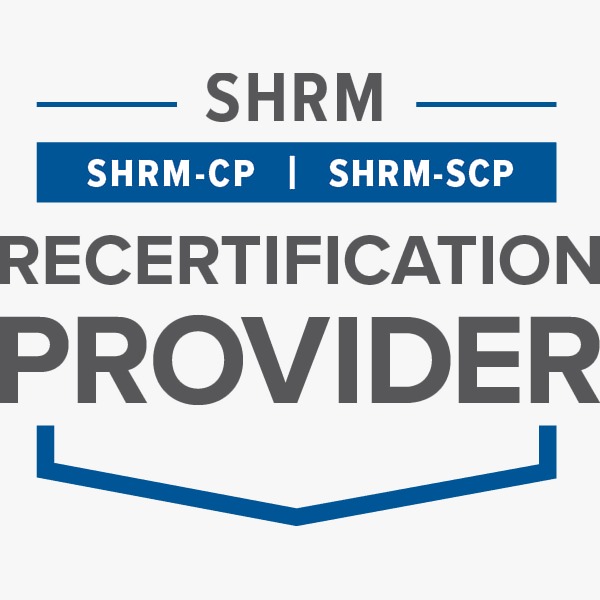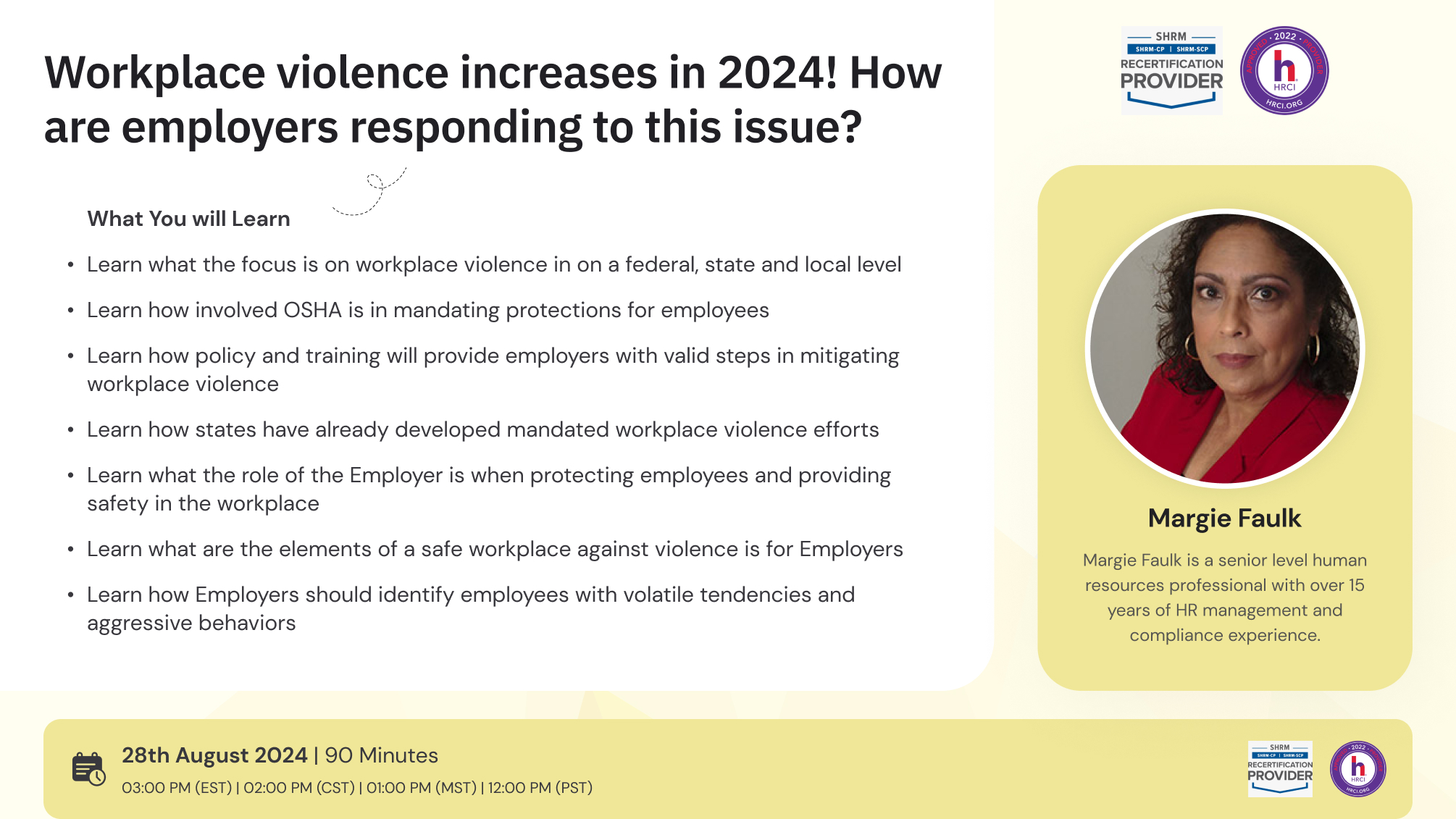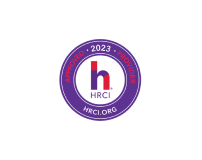Workplace Violence Increases in 2024! How Are Employers Responding to this Issue?
Every year, thousands of American workers report having been victims of workplace violence. In 2021-22, assaults resulted in 57,610 injuries. In 2022, 525 fatalities due to assault were reported, according to Injury Facts.
Workplace violence is the act or threat of violence. It ranges from verbal abuse to physical assaults directed toward people at work or on duty. Violence can occur in any workplace and among any type of worker.
The impact of workplace violence can range from psychological issues to physical injury, or even death.
The risk for fatal violence is greater for workers in sales, protective services, and transportation. The risk for nonfatal violence resulting in days away from work is greatest for healthcare and social assistance workers.
According to the Bureau of Labor Statistics, 20,050 workers in the private industry experienced trauma from nonfatal workplace violence in 2020. These incidents required days away from work.
Of those victims who experienced trauma from workplace violence:
- 73% were female
- 62% were aged 25-54
- 76% worked in the healthcare and social assistance industry
- 22% required 31 or more days away from work to recover
- 22% involved 3-5 days away from work
Over the past few years, workplace violence has been on the rise, particularly in specific industries such as healthcare and social assistance (Phillips, 2016). Healthcare workers are at a significantly higher risk of experiencing workplace violence, with incidents occurring at a rate four times higher than in the private sector (OSHA, 2015). The shift toward remote work, economic instability, and political polarization have contributed to increased tensions and conflicts within organizations (Lipscomb & London, 2015). For instance, data from the FBI shows that workplace active shooter incidents have increased by more than 150% between 2006 and 2018 (FBI, 2019).
What You will Learn
- Learn what the focus is on workplace violence in on a federal, state and local level
- Learn how involved OSHA is in mandating protections for employees
- Learn how policy and training will provide employers with valid steps in mitigating workplace violence
- Learn how states have already developed mandated workplace violence efforts
- Learn what the role of the Employer is when protecting employees and providing safety in the workplace
- Learn what are the elements of a safe workplace against violence is for Employers
- Learn how Employers should identify employees with volatile tendencies and aggressive behaviors
- Learn how an effective Employee Assistance Program (EAP) can help employees manage mental health issues as a result of violence in the workplace
- Learn what penalties and fines can be placed on the Employer and/or the employee who is part of workplace violence incident
- Learn how Managers who don’t follow safety guidelines can be at risk of criminal sanctions due to Vicarious Liability
Why You Should Attend
Managers and safety professionals at every workplace should develop a policy on violence that includes:
- Employee training and creating an emergency action plan
- Conducting mock training exercises with local law enforcement
- Adopting a zero-tolerance policy toward workplace violence
Who will Benefit
- All Employers
- Business Owners
- Company Leadership
- Compliance professionals
- Payroll Administrators
- HR Professionals
- Compliance Professionals
- Managers
- Supervisors
- Employers in all industries
- Small Business Owners

Margie Faulk
Margie Faulk is a senior level human resources professional with over 15 years of HR management and compliance experience. A current Compliance Advisor for HR Compliance Solutions, LLC, Margie, has worked as an HR Compliance advisor for major corporations and small businesses in the small, large, private, public, Non-profit sectors and International compliance. Margie has provided small to large businesses with risk management strategies that protect companies and reduces potential workplace fines and penalties from violation of employment regulations. Margie is bilingual (Spanish) fluent and Bi-cultural. Margie’s area of expertise includes Criminal Background Screening Policies and auditing, I-9 document correction and storage compliance, Immigration compliance, employee handbook development, policy development, sexual harassment investigations/certified training, SOX regulations, payroll compliance, compliance consulting, monitoring US-based federal, state and local regulations, employee relations issues, internal investigations, HR management, compliance consulting, internal/external audits, and performance management. Margie’s unique training philosophy includes providing free customized tools for all attendees. These tools are customized and have been proven to be part an effective risk management strategy. Some of the customized tools include the I-9 Self Audit. Correction and Storage program, Ban the Box Decision Matrix Policy that Employers can provide in a dispute for allegations, Family Medical Leave Act (FMLA) Compliance Guide, Drug-Free Workplace Volatile Termination E-Book and other compliance program tools when attendees register and attend Margie’s trainings. Margie holds professional human resources certification (PHR) from the HR Certification Institution (HRCI) and SHRM-CP certification from the Society for Human Resources Management. Margie is a member of the Society of Corporate Compliance & Ethics (SCCE).

SHRM -
StandEagle is recognized by SHRM to offer Professional Development Credits (PDCs) for the SHRM-CPSM or SHRM-SCPSM. This program is valid for 1.5 PDCs for the SHRM-CPSM or SHRM-SCPSM. For more information about certification or recertification, please visit - portal.shrm.org.

HRCI -
This webinar has been approved for 1.5 HR (General) re-certification credit hours toward California, GPHR, HRBP, HRMP, PHR, and SPHR recertification through the HR Certification Institute.
The use of this seal is not an endorsement by the HR Certification Institute of the quality of the activity. It means that this activity has met the HR Certification Institute’s criteria to be pre-approved for re-certification credit.

ACCREDITATIONS


